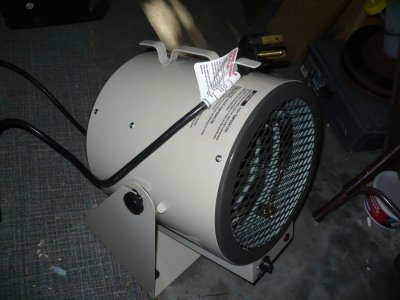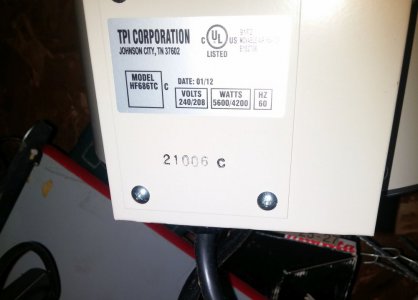Dan,
Since there are several options, I think the other important question is what do you want to achieve? Are you trying to replace the existing electrical heat? Add another heater? If you're trying to add another heater, what is the breaker size and wire size for the supporting circuit? Or are you looking to add a circuit?
I was thinking of just having 'space' heating when I'm out in the garage and am not going to try to heat the entire shop.
There's no insulation in the walls. Ceiling yes, walls nada. I've been using a propane heater this season, but with the cost of propane. . .
Shop sub-panel is a kluge. I should have re-wired the entire garage and insulated it when we were moving in, however there were pressing issues with the house itself that I had to remedy.
It's a detached garage, that was supplied by an underground 10ga Romex to a (8) slot sub-panel, until we dug up the septic several years ago.
The Romex was running out of the basement, under a concrete patio then 10' to the garage.
When that got messed up, I replaced it with a run of 8ga SO under the attached covered porch deck to the garage.
30A at the main panel in the basement out to the sub panel's 30A cut-off breaker, and from there I run 15A or 20A breakers.
The lathe and the ceiling heater are on the same 20A circuit, so I make sure never to run both at the same time.
(7) circuits total currently, (2) 220V, (5) 110V. 24' x 24' garage.
This is the ceiling heater I have up currently:


It's not really a good source since it's mounted up on the 8' ceiling, doesn't get down to 'knee' level.



